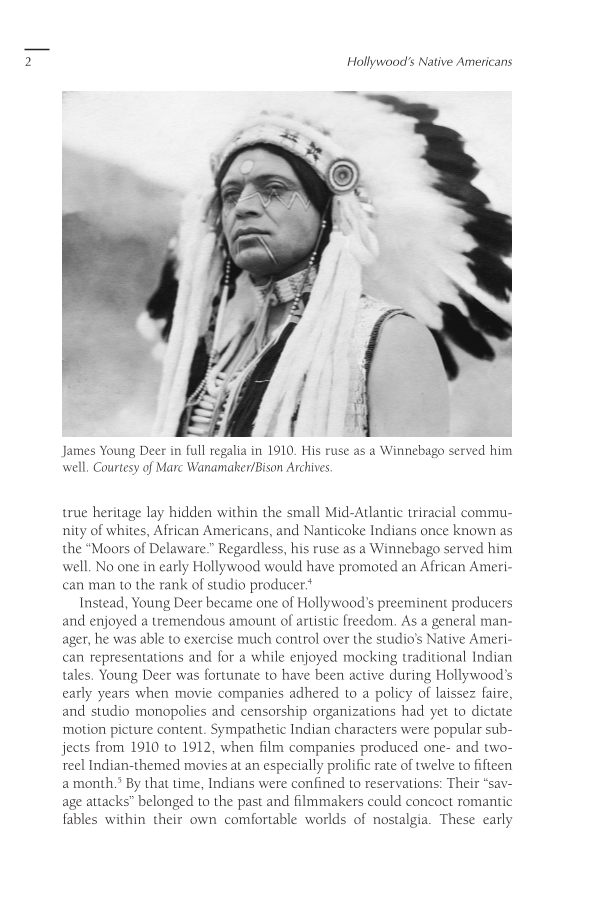2 Hollywood’s Native Americans true heritage lay hidden within the small Mid-Atlantic triracial commu- nity of whites, African Americans, and Nanticoke Indians once known as the “Moors of Delaware.” Regardless, his ruse as a Winnebago served him well. No one in early Hollywood would have promoted an African Ameri- can man to the rank of studio producer.4 Instead, Young Deer became one of Hollywood’s preeminent producers and enjoyed a tremendous amount of artistic freedom. As a general man- ager, he was able to exercise much control over the studio’s Native Ameri- can representations and for a while enjoyed mocking traditional Indian tales. Young Deer was fortunate to have been active during Hollywood’s early years when movie companies adhered to a policy of laissez faire, and studio monopolies and censorship organizations had yet to dictate motion picture content. Sympathetic Indian characters were popular sub- jects from 1910 to 1912, when film companies produced one- and two- reel Indian-themed movies at an especially prolific rate of twelve to fifteen a month.5 By that time, Indians were confined to reservations: Their “sav- age attacks” belonged to the past and filmmakers could concoct romantic fables within their own comfortable worlds of nostalgia. These early James Young Deer in full regalia in 1910. His ruse as a Winnebago served him well. Courtesy of Marc Wanamaker/Bison Archives.
Document Details My Account Print multiple pages
Print
You have printed 0 times in the last 24 hours.
Your print count will reset on at .
You may print 0 more time(s) before then.
You may print a maximum of 0 pages at a time.











































































































































































































































